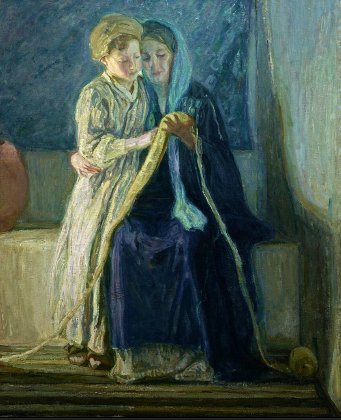Henry Ossawa Tanner (1859–1937) became the first African-American artist to gain international acclaim for his works. Tanner was born in Pittsburgh, Pennsylvania. When he was a few years old, Tanner moved with his family to Philadelphia, where he would spend most of his childhood. Despite the initial objections of his father who was a bishop in the African Methodist Episcopal Church, Tanner fell in love with the arts. He was 13 when he decided he wanted to become a painter, and throughout his teens, he painted and drew as much as he could. In 1880 Tanner enrolled at the Pennsylvania Academy of the Fine Arts. There, he studied under Thomas Eakins (1844-1916), widely regarded as one of America’s greatest artists, who was also an influential teacher. Eakins had a profound impact on Tanner's life and work. As well, he was his champion when he faced discrimination. In 1891 Tanner's life took a dramatic turn with a visit to Europe. In Paris, France, in particular, Tanner discovered a culture that seemed to be light years ahead of America in race relations, free from the prejudicial confines that defined his life in his native country. These were formative years as an artist where he developed his style through contact with French impressionists. Both Tanner’s parents were learned people of faith. They heavily influenced his interest in biblical themes in his art. He became known as a master of the religious genre, creating biblical paintings marked by a unique approach to light and tone. Although Tanner chose to live as an expatriate for most of his life, his ties to America and the African-American struggle for dignity and equality remained of constant concern to him, as did his friendship with Booker T. Washington. He remained in France until his death and was named chevalier of the Legion of Honour in France in 1923.
%20(1).png)
%20(1).png)









.jpeg)
